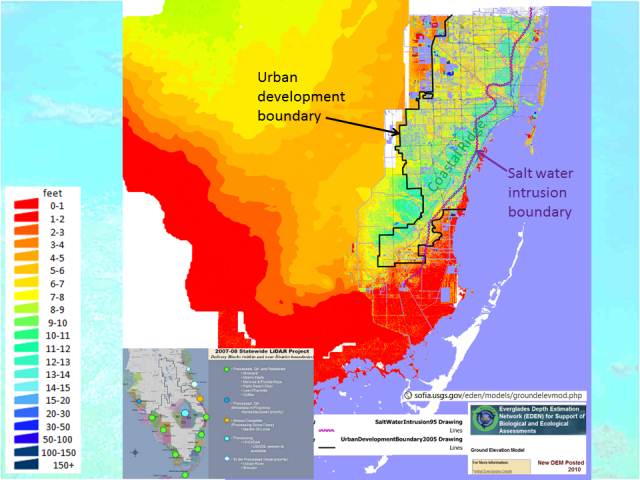- Home
- Coastal Vulnerabilities
Coastal Vulnerabilities
This working group focuses on the impact of sea level rise (SLR) over the Miami area and its effects on physical, social and ecological landscapes. The objective of the initial phase was to conduct a preliminary assessment of the risks and vulnerabilities of coastal areas in the study area, as a function of its inherent physiography and hydrology, land use and land cover, population and socioeconomic differences under scenarios of projected sea level rise and climate change. As elevations in the Miami area are low (naturally no higher than 26 feet) a relative change in sea level will become the principal driver of physical and biological change and will ultimately influence all social responses. Rapid changes currently predicted in the next century (CCATF 2008, Karl, et al., 2009), will greatly affect the Miami area. The exact amount and timing of SLR are uncertain but several trends have appeared in the data. Sea level is rising much faster than previously (2mm/yr in the latter half of the 20th Century-now near 3mm/yr) and model projections mostly follow a curved path leading to higher rates in the not-too-distant future (IPCC 2007, Richardson et al. 2009). In some regions of southern Miami-Dade County, the relative rate is even greater due to eradication of and decreased freshwater connectivity through coastal wetlands (Gaiser et al., 2006). Social vulnerability to natural disasters, climate-driven and other, is not caused by a single agent but by the complex interaction of environmental and social forces. Key determinants of social vulnerability are a community’s ability to resist and be resilient to environmental change. For the most part, historically-constituted social and political inequalities produce social vulnerability to natural and man-made disasters (Hoffman and Oliver-Smith 2002; Hewitt 2007).
